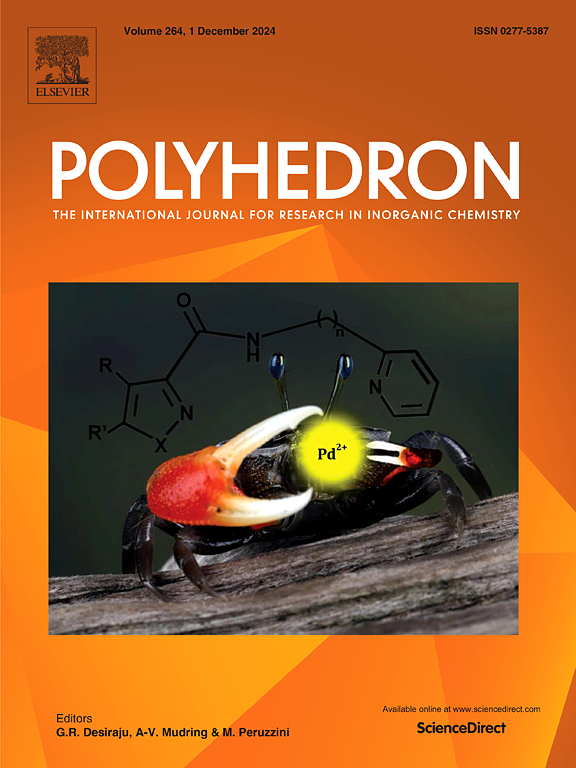Tellurium and nickel homobinuclear metallamacrocycles based on the redox-active dioxolene ligands
IF 2.4
3区 化学
Q2 CHEMISTRY, INORGANIC & NUCLEAR
引用次数: 0
Abstract
Ditopic ligand containing two 3,6-di-tert-butyl-o-benzoquinonato fragments linked through 4-position by resorcinol bridge was utilized for synthesis of metallamacrocyclic complexes with tellurium and nickel. Both compounds consist of two metal-centered coordination units connected by two bis-dioxolenes. Coordination units have distorted octahedral geometry. Four coordinated oxygen atoms of dioxolenes form uncompleted distorted octahedron environment. The lacking sites in octahedron coordination sphere are filled with electronic lone pairs in the case of tellurium and phenanthroline ligand in the case of nickel. In contrast to previously described cobalt and nickel complexes with the same bis-dioxolene, metal units are situated not cofacially. The reason of this is saturation of coordination sphere of central atom until octahedron which excludes coordination with internal solvent molecule which can connect both metals.

求助全文
约1分钟内获得全文
求助全文
来源期刊

Polyhedron
化学-晶体学
CiteScore
4.90
自引率
7.70%
发文量
515
审稿时长
2 months
期刊介绍:
Polyhedron publishes original, fundamental, experimental and theoretical work of the highest quality in all the major areas of inorganic chemistry. This includes synthetic chemistry, coordination chemistry, organometallic chemistry, bioinorganic chemistry, and solid-state and materials chemistry.
Papers should be significant pieces of work, and all new compounds must be appropriately characterized. The inclusion of single-crystal X-ray structural data is strongly encouraged, but papers reporting only the X-ray structure determination of a single compound will usually not be considered. Papers on solid-state or materials chemistry will be expected to have a significant molecular chemistry component (such as the synthesis and characterization of the molecular precursors and/or a systematic study of the use of different precursors or reaction conditions) or demonstrate a cutting-edge application (for example inorganic materials for energy applications). Papers dealing only with stability constants are not considered.
 求助内容:
求助内容: 应助结果提醒方式:
应助结果提醒方式:


